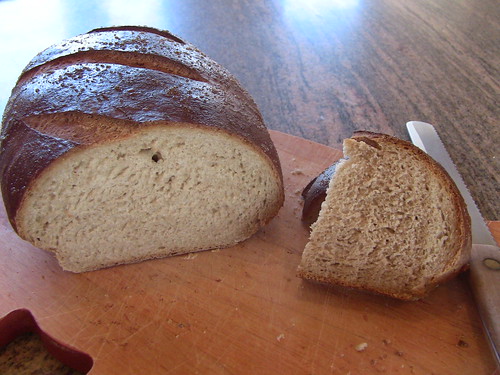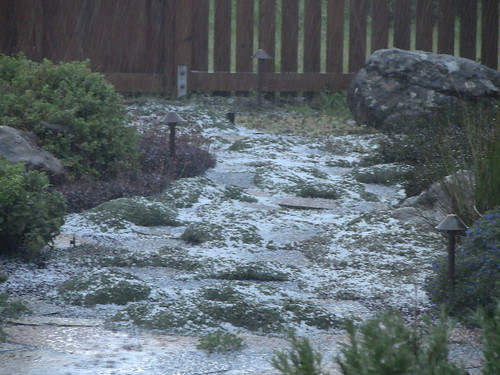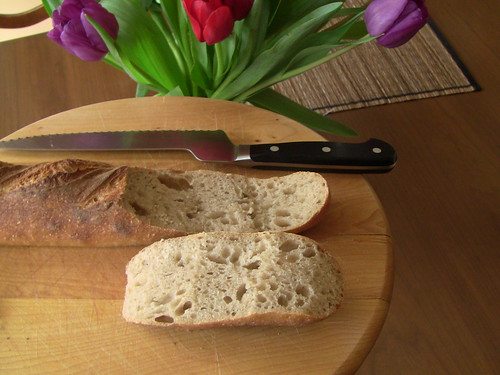GSnyde's blog
Tartine for Two: Not Quite Following the Formula
Back from vacation, I needed to bake some sourdough. Tartine’s Basic Country Bread has become my favorite. Its crumb is my ideal texture for a hearth bread--just the right amount of chew, and airy and moist. But, as I’ve noted before, large loaves just aren’t practical for our everyday use. Last time I baked a batch, it was one large loaf and two small ones. This time I made four half-kilo loaves, two batards and two boules.
Baking In Kona
We’re back from our trip to the Kona Coast on the Big Island of Hawai’i. Since we spent a lot of time in the ocean, and another large part out enjoying the sights and flavors of the islands, there were not a lot of occasions for baking. Plus, though our friends’ house where we stayed has a well-equipped kitchen, it isn’t well equipped for baking.
A Rye Sense of Humor
Having just begun what could be a long adventure with rye breads, I may not be an expert yet. But I've developed a formula that replicates the texture of 40% rye dough.
800 g warm water
750 g rye sour
150 g quick set cement
50 g Epoxy
1/2 cup Altus (optional)
1 Tbsp Caraway seeds (optional)
Once you mix the ingredients (I recommend a mason's trowel) and scrape as much as you can off the spatulas, your hands, the bowl and the work surface, you have enough for a small dinner roll.
Glenn
How Many Snyders Does It Take To...
Brother David and his wife Susan are traveling back to Fresno after a weekend in the Bay Area to see our visiting brother Aaron from Colorado. So with the two locals, we had 80% of the Snyder siblings in one place. That place, of course, was well-provisioned with baked goods, and we had a very nice brunch at Sister Norma’s apartment in Oakland.
Producing a Tender Crumb – Tartine Basic Country Bread
But, first, the weather. Thunder, lightening and hail may not be a big deal to people in some localities. But in Northern California, they are rare as reliable weather-forecasting. Saturday, our morning coffee was interrupted by a crashing downpour of (admittedly small) hail. It went on for many minutes and accented our garden with glistening ice.
Some Spice Breads – One Sweet and One Savory
A drizzly weekend seemed like a good time to fill the house with the aroma of spices. It started out with the need to replenish our supply of Cinnamon-Raisin-Walnut Bread, my Number One Bread Fan’s favorite. Then, I wanted to bake something really special to take to our friends’ new house for a pre-dinner snack and cocktail. I settled on making a second attempt at the Cheese-Curry-Onion Bread from The Cheese Board Collective’s cookbook.
Cinnamon


